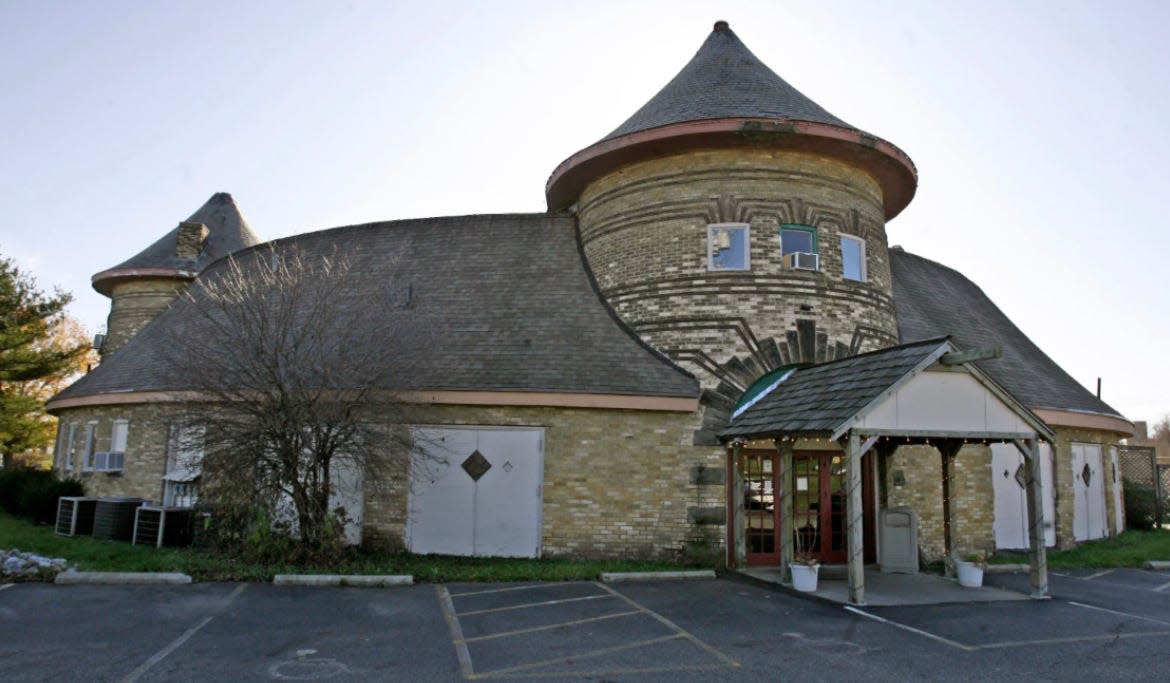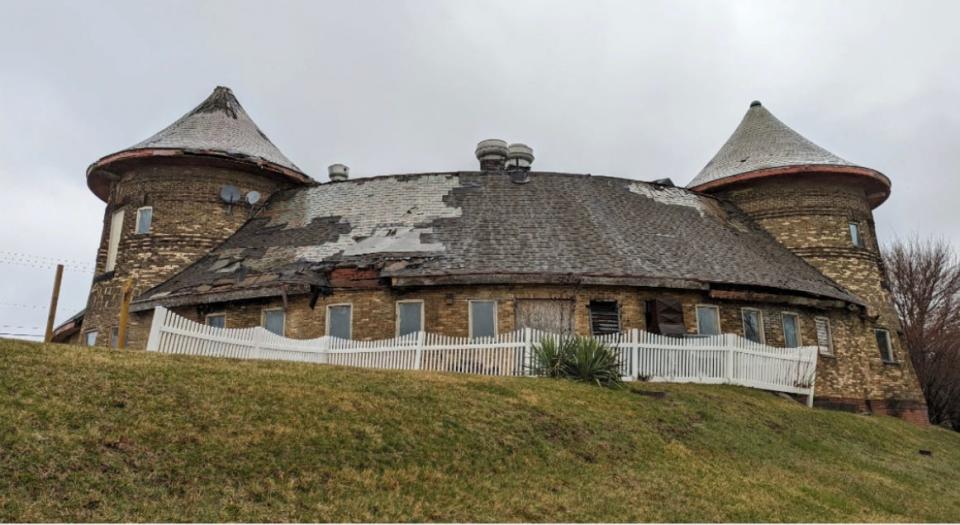Effort to save Timken Stables has moved through decades | The Monday After

Round barn was an historically significant part of the former Timken estate.
The unique image of the Timken Stables, one of the historical gems in Canton, was saved in November of 1994.
Jan VanNostran, who sent Rotograms to members of Rotary Club of Canton members at that time, had appealed for extra copies of Canton watercolorist Tom Franta's 1986 Rotary holiday card, according to Diana Rossetti's "Boldface" column published on Nov. 27, 1994. That watercolor card depicted the Timken Stables.
"I needed that year to make up complete sets of all 12 years that Tom has been doing our cards," VanNostran explained. "Finally, one of our past presidents, in the process of moving, came across a box of them and donated them to the office."
That took care of preserving copies of the painting of the Stables, the round, once-proud and now faded structure on 13th Street NW, just west of Interstate 77. Saving the unique, historically significant barn that has existed for more than a century could prove more difficult.
"At the present time there is not anything we can do about it," said Barb Hickman, president of the Canton Preservation Society, noting the future of the Stables might be determined by a suit filed in court by the city of Canton seeking to force the owner to bring the structure up to fire and building codes.
According to an article published by The Canton Repository in March, the building at 2317 13th St. NW is owned by Beit HaKavod Messianic Synagogue, which is led by Rabbi Mark and Heidi Lancaster.
Lancaster, in a Repository story published March 19, said Beit HaKavod, which he founded in 2009, is working to raise the $4 million that is the estimated cost for repairs.
Meanwhile, those interested in preserving the Stables for its historic and architectural significance, wait for the pending lawsuit to decide the structure's fate.
"Our hands are tied," said Hickman.
An endangered treasure
The Preservation Society knows of the Stables' condition and long has encouraged saving it.
Almost a decade ago, an article written by Mimi Bogard in the Society's newsletter, "The Preservationist," called the Timken Stables one of Canton's endangered significant buildings.
"If local residents were asked to list Stark County's Most Endangered Historic Places, what would be named?" the newsletter asked in Fall 2014. "The Canton Preservation Society feels certain that the Timken Stables would make the list, probably right at the top."
Bogard noted that the Stables’ circular design was practical and interesting.
"The round shape of the Henry H. Timken Estate Barn, as it was listed in 1978 on the National Register of Historic Places, attracts attention," she wrote. "The design was believed to be most economical in use of construction materials, and most efficient for labor in the days before powered farm machinery.
"A circular design can also be well-suited for equestrian architecture, as at the Timken Estate Barn. The donut-shaped enclosure provided horse stalls and carriage storage and the central open area offered an ample training arena of 80 feet in diameter. The four round two-story towers, each 26 feet in diameter, accommodated haylofts and grain storage."

Added to the estate
Stark County historian and speaker Richard Haldi, a trustee for the Preservation Society, is knowledgeable about the Stables and the Timken estate. Haldi notes that H.H. Timken built seven structures on his 300-acre estate, including the Stables, between 1915 and 1917.
"Mr. Timken's address was Harrison Ave. Extension, as was the address for his stables and his westside caretaker's home, that lovely Timken 'farm house' that was located just north of the stables, a home that was demolished when the I-77 expressway came through the old Timken Estate in the late 1950s," explained Haldi, putting the pieces of the Timken estate into perspective.
That estate was a "working" farm, that could have used a barn of any shape.
"The first thing you passed when entering Timken estate property was a pond on your left with its beautiful waterfall -- a dammed up pond that was formed by Mr. Timken from the overflow stream that came from Meyers Lake," said Haldi. "It was an area grazed by many, many sheep until shortly after WWII."
Built more than a century ago
Research has shown construction of the Stables began in 2015, said Haldi, who cited a Repository article brought to his attention by a friend.
"Work was started Wednesday on farm buildings to be built on H.H. Timken's Farm in the rear of his home on Harrison Avenue NW. The buildings when completed, will cost approximately $67,000," said the article published Aug. 4, 1915.
The article reported the circular barn would cost $60,000. That barn, the article said, constructed of pressed brick with a fire retardant roof, would be virtually "fireproof."
"I believe the building's 1915-dollar cost ($60,000) represents something like 29 times that amount in today's 2023 dollar buying power value," estimated Haldi. "That's an extraordinary cost for a barn in 1915, to say the least, even for Mr. Timken."
Restaurant was recent use
After it was placed on the National Register of Historic Places, the interior of the barn was altered to reflect its later use as restaurant and bar.
The open arena courtyard, for example, was enclosed using ceiling beams from the old Massillon Washington High School. For nearly a decade beginning in 1992, the building was operated as an eating establishment – The Stables Hall of Fame Grille – under the ownership of Massillon, Ohio State and professional football notable Chris Spielman.
It and other restaurant operations struggled, however, and the Stables went up for auction, Bogard noted in the Preservation Society's newsletter article. Beit HaKavod Messianic Synagogue under the leadership of the Lancasters bought the building in 2013.
The following year, the Preservation Society held one of its "Sneak Peak" events at the barn, opening it up for inspection by the public to raise funds both for the society and for repurposing the Stables as a house of worship.
Now, because of the pending court case, attention has focused on how to save the Stables, either through repair efforts by the owner or by acquisition by another party.
A Repository article by Charita Goshay published on March 19 reported that Rabbi Mark Lancaster, in a five-page statement to the paper, accused the city of trying to "take our building away from us."
A letter to the editor by Carol Canavan of North Canton suggested Stark County should obtain the building, "update it and turn it into a county Welcome Center featuring all of the Stark County places to see and visit."
"We don't care who owns it, we just want it to be saved," said Hickman of the Preservation Society's interest in the property. "It's a part of Canton's history. We've lost a lot of buildings. We would prefer it didn't get torn down."
Reach Gary at gary.brown.rep@gmail.com. On Twitter: @gbrownREP.
This article originally appeared on The Repository: Effort to save Timken Stables in Canton move through decades

